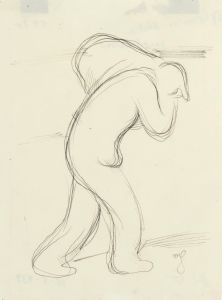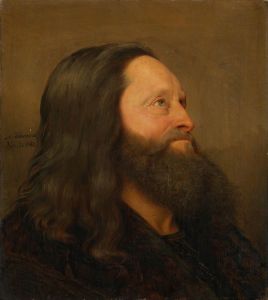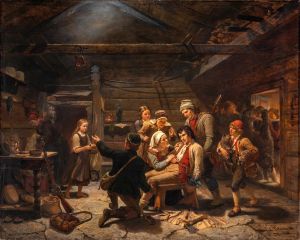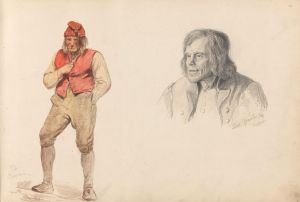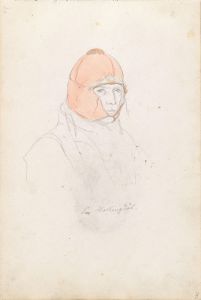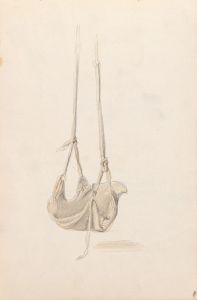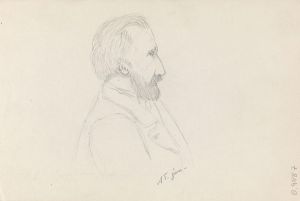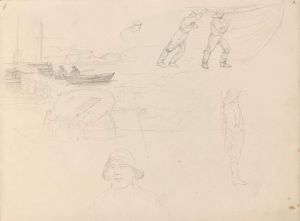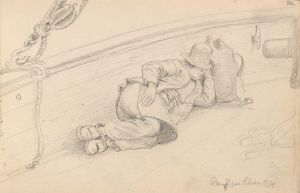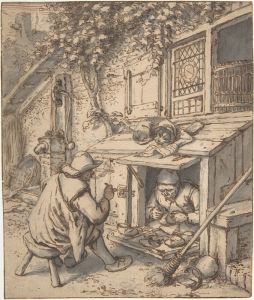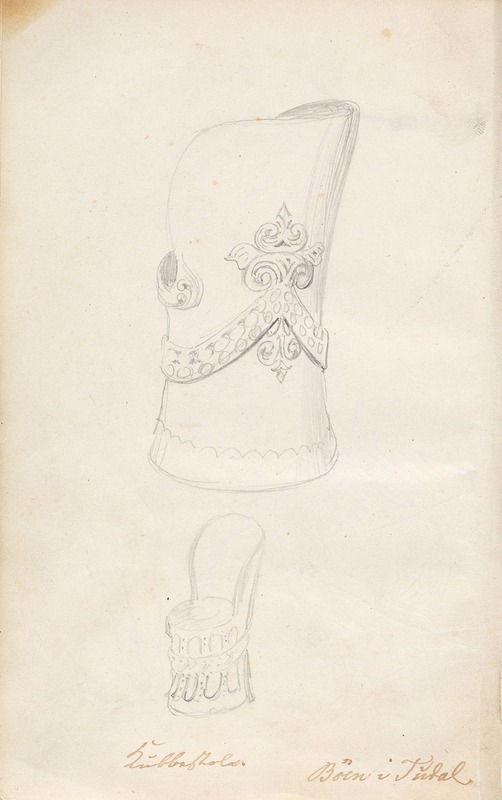
Kubbestoler, Bøen i Tuddal
A hand-painted replica of Adolph Tidemand’s masterpiece Kubbestoler, Bøen i Tuddal, meticulously crafted by professional artists to capture the true essence of the original. Each piece is created with museum-quality canvas and rare mineral pigments, carefully painted by experienced artists with delicate brushstrokes and rich, layered colors to perfectly recreate the texture of the original artwork. Unlike machine-printed reproductions, this hand-painted version brings the painting to life, infused with the artist’s emotions and skill in every stroke. Whether for personal collection or home decoration, it instantly elevates the artistic atmosphere of any space.
Adolph Tidemand's painting Kubbestoler, Bøen i Tuddal is a notable work by the Norwegian artist, who is widely recognized for his contributions to the Romantic Nationalism movement in 19th-century Norway. Painted in 1852, this artwork is a fine example of Tidemand's dedication to documenting and celebrating Norwegian rural life, traditions, and cultural heritage.
The title of the painting, Kubbestoler, Bøen i Tuddal, translates to "Log Chairs, Bøen in Tuddal." The work depicts a scene from the rural area of Tuddal, located in Telemark County, Norway. The focus of the painting is on traditional Norwegian log chairs, known as "kubbestoler," which were carved from single tree trunks and often decorated with intricate patterns. These chairs were a common feature in Norwegian homes, particularly in rural areas, and they symbolize the craftsmanship and resourcefulness of the local population.
Tidemand's choice to highlight the kubbestoler reflects his broader artistic mission of preserving and showcasing Norwegian folk culture during a time of increasing modernization and urbanization. By capturing such details, Tidemand contributed to the growing sense of national identity in Norway, which was seeking to distinguish itself culturally and politically in the decades following its independence from Denmark in 1814.
The painting is also significant for its setting, Bøen in Tuddal, a region known for its picturesque landscapes and traditional way of life. Tidemand often traveled to rural areas like Tuddal to gather inspiration and study the customs, clothing, and architecture of the local communities. His works are characterized by their ethnographic accuracy and attention to detail, which make them valuable historical records as well as artistic achievements.
Adolph Tidemand (1814–1876) was one of Norway's most prominent painters of the 19th century. He studied art in Copenhagen, Düsseldorf, and other European cities, but his most enduring legacy lies in his depictions of Norwegian rural life. His works often feature scenes of farmers, traditional costumes, and domestic interiors, all rendered with a sense of warmth and respect for his subjects.
Kubbestoler, Bøen i Tuddal is housed in the National Museum of Art, Architecture and Design in Oslo, Norway. The painting remains an important piece in the museum's collection, offering viewers a glimpse into Norway's cultural history and Tidemand's artistic vision.





